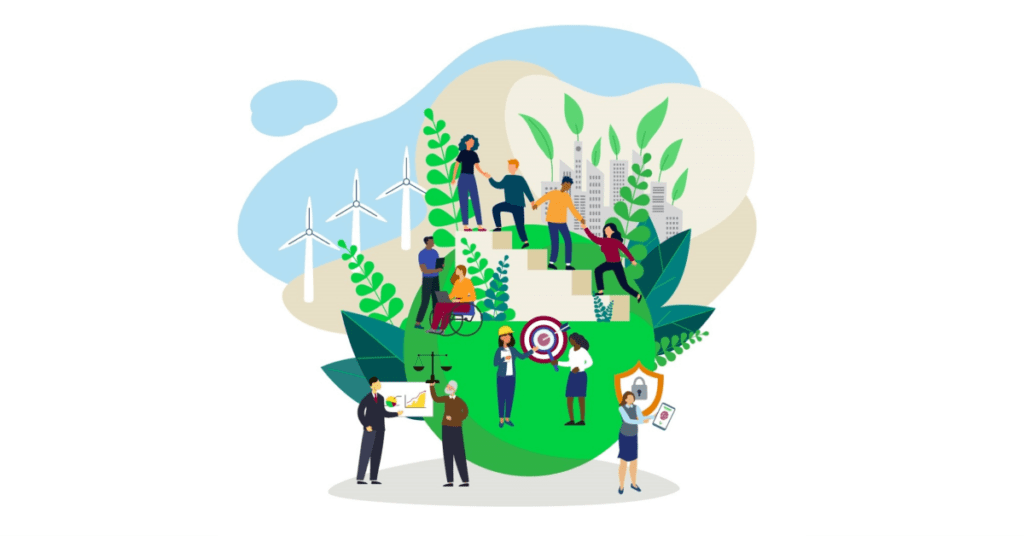Trust is fundamental to business. It is the invisible glue underpinning the most elemental commercial transactions. Yet, it can also be hard to define.
Nowadays, corporate responsibility extends far beyond delivering simple shareholder returns, encompassing an increasingly broad array of non-financial factors and expectations, such as environmental, social and governance (ESG). Many stakeholders expect organizations to do well financially and to do good things for the world as part of the same process.
The climate crisis. Rising energy costs. Rapid technological change. Growing geopolitical instability. Increasing social and political polarization. All these forces are reshaping popular perceptions of business. They’re also expanding the increasingly complex – and oftentimes conflicting – range of stakeholder interests and expectations that companies must cater to.
At a time where misinformation is omnipresent and individual perceptions rule, building and maintaining stakeholder trust is more important than ever. It’s also more complicated.
All this means that trust – conceptualized broadly as the goodwill that a business has cultivated in its relationships with customers, suppliers, partners, employees, investors, governments, regulators and civil society – is an increasingly vital strategic asset. And it’s one that’s more and more difficult to maintain.
So, faced with these challenges, how can companies build and safeguard stakeholder trust for the future?
Building a stakeholder trust foundation
As a provider of critical infrastructure in an increasingly fragmented world – powering everything from electricity grids and data centers to hospitals and factories – trust is fundamental to Schneider Electric’s corporate strategy.
We’re committed to achieving “Trust @ Scale”, to embedding a culture of trust across every level of the company – from the CEO’s office to the shop floor. These principles are codified in our Trust Charter, and our efforts to realize them are transparently disclosed in our annual Trust Report.

These commitments, and the awards and recognitions we receive from independent parties for our ethical performance, speak to our dedication to maintaining stakeholder trust. But we cannot grow complacent and must remain conscious that trust – like so many other business matters – is an accelerating treadmill, an elusive goal and an ever-rising bar.
So, as new threats and challenges emerge – in a world that is ever more digitized, fragmented and fast paced – our business practices must adapt.
Take, for example, Artificial Intelligence (AI). Much of the reaction to new technologies like ChatGPT and Midjourney has understandably focused on attention-grabbing headlines of plagiarized essays, fake songs and even uncanny images of the Pope. But these technologies also pose profound governance dilemmas.
Just look at the leaking of confidential source code to OpenAI’s ChatGPT system by engineers in Samsung’s semiconductor division. Suddenly, because ChatGPT retains user input data to further refine its algorithms, those trade secrets have apparently been transferred to OpenAI.
And that’s just the tip of the iceberg. Blockchain might pose similar ethical and privacy concerns, as do the increasingly complex flows of confidential data on the Internet of Things (IoT). There is no trust without digital trust.
Building Trust @ Scale

Faced with this rapidly evolving risk landscape, companies must recognize the inevitability of setbacks. That means basing trust maintenance strategies, not solely on risk avoidance, but also on effective responses to any incidents that may arise.
At Schneider Electric, we began by defining what trust means to the company in practical terms. And we determined that trust shapes our conduct in three main spheres: how we behave, how we make decisions and how we handle risks.
Our trust strategy is built on a trifecta of Integrity (principled behaviors), Transparency (objective decisions) and Resilience (thoughtful risk taking).
To turn this strategy into action, we have developed a “funnel” approach to managing risk. This entails increasing the maturity of our operations to better understand our exposure to risk; implementing measures to limit the extent of that exposure and reduce the number of adverse incidents; and, finally, reacting rapidly to contain incidents before they grow into controversies.
With this in mind, we adopt an “end-to-end” approach to incident response. This entails breaking down silos and ensuring that, in the event of, say, a cybersecurity incident, experts from across the company (from IT and legal, to PR and customer relations) can collaborate seamlessly to address all the varied and interconnected stakeholder concerns that will arise.
Trust, risk and competing priorities
Risk, ultimately, is intrinsic to trust. Only by making ourselves vulnerable to harm can we ever foster the mutually beneficial relationships that are necessary for stable growth.
In this age of uncertainty, persuading partners to take that leap of faith is harder than ever. So, it’s essential that companies tailor their trust-building strategies to appeal to all the diverse stakeholders that comprise their ecosystem and institute procedures to effectively manage those inevitable instances when interests diverge.
Just think of the tension between preserving user privacy and ensuring data security, for example, or the challenge of maintaining transparency without sacrificing necessary trade secrecy.
Faced with such competing – and sometimes conflicting – demands and priorities, continuing to build trust will always be a delicate balancing act, more of an art than a science, requiring integrity, transparency and resilience. And, as part of Schneider Electric’s ongoing pursuit to deliver on this hard to define, yet critical element, several of my colleagues will continue to address the topic of trust from various angles over the next few weeks.



